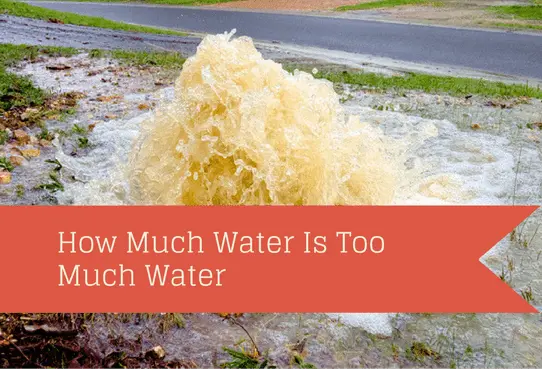
Sprinkler systems are often running during the summer months. While there’s no denying the importance of keeping your trees, shrubs, bushes, perennials and annuals, and other living exterior features properly hydrated when temperatures rise and humidity levels increase, there is such a thing as too much of a good thing when it comes to H20.
In fact, if you happen to be in the habit of watering every day or even every other day, you’re adding too much water on your lawn, no matter what your neighbors might be doing with their own lawns.
What Over Watering Does to Your Lawn
The area just below your grass has porous (open) spaces within all the sand, clay, and other particles that make up your soil.
When it rains, those open spaces are filled up with water and air is forced out. Too much water on lawn keeps those spaces constantly filled with water, which means your lawn’s roots won’t be getting sufficient oxygen.
A shallow root system also makes your lawn more vulnerable to stress from disease and insect damage and offers more space for weeds to grow.
And the weeds that usually thrive on overwatered lawns are often the ones that are difficult to control because they develop deeper roots.
Increasing Your Lawn Care Expenses
Overwatering also makes lawn treatment efforts less effective. With fertilizer, for instance, the lack of a sufficient root system will wash it away before nutrients can be absorbed.
All this extra attention you’ll have to give your overwatered lawn could make lawn upkeep more costly for you.
Do You Have Too Much Water On Your Lawn?
It’s not always easy to tell when you’re going overboard with watering your outdoor spaces and your lawn certainly can’t tell you.
Pay attention to the following clues to determine if you add too much water on the lawn and may need to change your watering habits:
- An abundance of weeds, especially varieties like crabgrass and nutsedge
- Patches of thatch in thick mats on the surface
- An increase in harmful insects inhabiting your lawn
- Fungus growth that may include random mushrooms in certain spots
- A spongy feel on your lawn’s surfaces
- Runoff after watering (from lack of absorption)
- Light-green or yellowish grass that may suggest nutrients are being washed out by excess water
Adopting the Right Watering Habits
Contrary to popular believe over-watering when you’re in the middle of a dry spell won’t protect your lawn. In fact, your lawn won’t suffer if you under-water.
Established lawns go dormant and usually start thriving again when regular rain returns. Look for visual clues to determine when to water.
Grass that needs hydration usually turns a blush color and impressions from your footprints will linger. Early morning is usually a better time to water your lawn.
Try to avoid times when it’s hot out and the sun is high since capillary pressure may reduce absorption.
Newer sprinkler systems have more precise detection features to determine when watering is appropriate.
Even so, irrigation systems don’t yet have the ability to take factors such as the type of lawn you have and its condition, humidity, wind speed, and soil moisture levels into consideration, so you’ll need to be proactive about your watering habits to keep your lawn healthy and green throughout the growing season.
Create A Watering Schedule

If you have an irrigation system, it needs to be set to come on early in the morning before the sun comes up. Lawns need at least 1 inch of water per week and roughly 1-1 1/2 inches of water per week during the hottest and driest months.
Usually, 2-3 times per week is fine to water, as long as we do get some rainfall from time to time.
Pop up heads need to water at least 20 minutes per zone and rotary heads need to water 40 minutes long. This allows the water to get down deeper into the soil to the roots of at least 6 inches.
If you do not water long enough, you will only be watering the top inch of the soil. Light waterings only dampen the lawn and can actually harm the grass. Here is a great tool to use to ensure you are watering efficiently: Place an empty tuna can or coffee can in your yard.
After your irrigation system has completed it’s daily cycle, you should see 1 to 1 1/2 inches of water at the bottom of the can.
Keep the following watering tips in mind:
- Take time to learn how much water your sprinkler system delivers with each watering
- Consider lawn treatment services if you’re dealing with persistent brown patches and other issues not responding to your watering efforts
- Make each watering thorough, but don’t follow a strict schedule
- Use a screwdriver or gardening trowel to determine how dry your soil is below the surface
Sprinkler and irrigation systems can be an effective solution for some of your watering woes, as can seeking advice from experienced landscaping professionals.
Our team at Purple Care is here to help with your landscape services and lawn care needs. Call us to learn more about our lawn services.
For More Information About Lawn Treatment, Contact Purple Care, The Fort Worth Landscaping Professionals, At (817) 880-6052.



Comments (0)
Thanks for your comment!
Thanks for your feedback! Your comments have been successfully submitted! Please note, all comments require admin approval prior to display.
Error submitting comment!
There is a problem with your comment, please see below and try again.